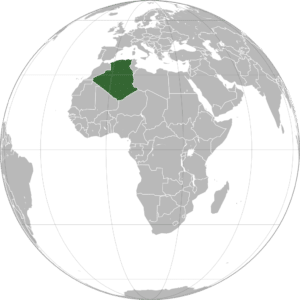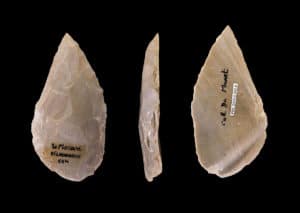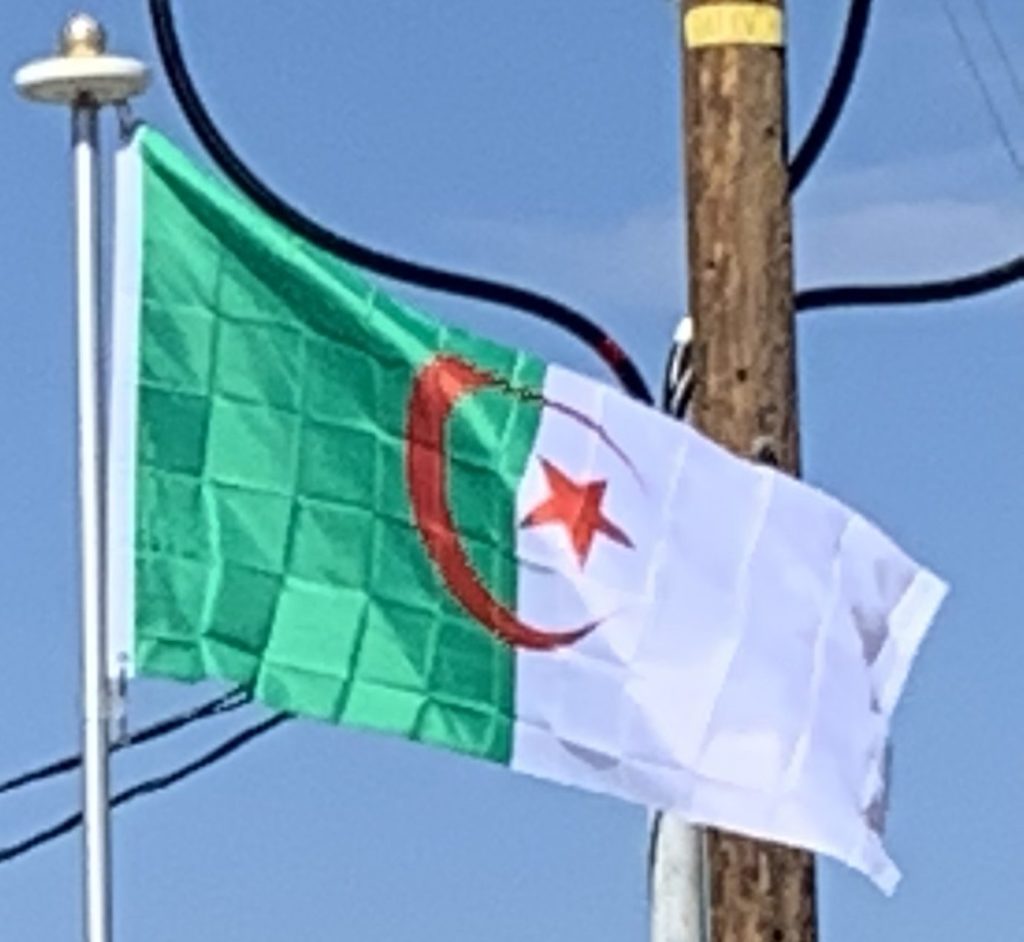Introduction:
Algeria, (Arabic: الجزائر) officially the People’s Democratic Republic of Algeria (Arabic: الجمهورية الجزائرية الديمقراطية الشعبية), is a country in the Maghreb region of North Africa. The capital and most populous city is Algiers, located in the far north of the country on the Mediterranean coast. With an area of 919,595 square miles, Algeria is the tenth-largest country in the world, and the largest in Africa. Algeria is bordered to the northeast by Tunisia, to the east by Libya, to the west by Morocco, to the southwest by the Western Saharan territory, Mauritania, and Mali, to the southeast by Niger, and to the north by the Mediterranean Sea. The country is a semi-presidential republic consisting of 48 provinces and 1,541 communes. It has the highest Human development index of all non-island African countries.

Ancient Algeria has known many empires and dynasties, including ancient Numidians, Phoenicians, Carthaginians, Romans, Vandals, Byzantines, Umayyads, Abbasids, Idrisid, Aghlabid, Rustamid, Fatimids, Zirid, Hammadids, Almoravids, Almohads, Spaniards, Ottomans and the French colonial empire. Berbers are the indigenous inhabitants of Algeria.
Algeria is a regional and middle power. It supplies large amounts of natural gas to Europe, and energy exports are the backbone of the economy. According to OPEC Algeria has the 16th largest oil reserves in the world and the second largest in Africa, while it has the 9th largest reserves of natural gas. Sonatrach, the national oil company, is the largest company in Africa. Algeria has one of the largest militaries in Africa and the largest defense budget on the continent; most of Algeria’s weapons are imported from Russia, with whom they are a close ally. Algeria is a member of the African Union, the Arab League, OPEC, the United Nations and is a founding member of the Arab Maghreb Union.
Origin of the Name:
The country’s name derives from the city of Algiers. The city’s name in turn derives from the Arabic al-Jazā’ir (الجزائر, “The Islands”), a truncated form of the older Jazā’ir Banī Mazghanna (جزائر بني مزغنة, “Islands of the Mazghanna Tribe”), employed by medieval geographers such as al-Idrisi.
History:
Ancient History:
In the region of Ain Hanech (Saïda Province), early remnants (200,000 BC) of hominid occupation in North Africa were found. Neanderthal tool makers produced hand axes in the Levalloisian and Mousterian styles (43,000 BC) similar to those in the Levant. Algeria was the site of the highest state of development of Middle Paleolithic Flake tool techniques. Tools of this era, starting about 30,000 BC, are called Aterian (after the archeological site of Bir el Ater, south of Tebessa).

The earliest blade industries in North Africa are called Iberomaurusian (located mainly in the Oran region). This industry appears to have spread throughout the coastal regions of the Maghreb between 15,000 and 10,000 BC. Neolithic civilization (animal domestication and agriculture) developed in the Saharan and Mediterranean Maghreb perhaps as early as 11,000 BC or as late as between 6000 and 2000 BC. This life, richly depicted in the Tassili n’Ajjer paintings, predominated in Algeria until the classical period. The mixture of peoples of North Africa coalesced eventually into a distinct native population that came to be called Berbers, who are the indigenous peoples of northern Africa.
